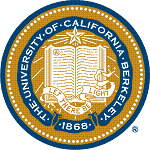« ORESTE » is an Associate Team between INRIA project-team ACUMES (formerly OPALE) and the Berkeley University team Connected Corridors (formerly Mobile Millennium), funded from 2012 to 2014, renewed from 2015 to 2017.
Research activity in 2012
Research Report for 2012
Exchanges between partners in 2012
During the first year of the project we had the following research visit exchanges:
- Walid Krichene, UC Berkeley Phd Student, visited Inria from August 18 to September 14, 2012.
- Jack Reilly and Samitha Samaranayake, UC Berkeley Phd Students, visited Inria from August 18 to September 29, 2012.
- Maria Laura Delle Monache, Inria Phd Student, visited UC Berkeley from October 5 to December 20, 2012.
Advances of the work program
The overall achievement of this first year of activity was:
- Create a continuous junction model for ramp-metering.
- Prove existence and uniqueness of solutions for the continuous problem.
- Derive the corresponding discrete junction model.
- Apply a Discrete Adjoint Method to compute the optimal solution of the corresponding ramp-metering optimization problem.
- Apply optimal reroute strategies for the model with extension to networks and multi-commodity flow.
During this first year we proposed a new junction model for ramp-metering in the continuous and discrete settings. We focused on a junction consisting in a mainline, an on-ramp and an off-ramp. In particular, we introduced a coupled PDE-ODE model, in which the PDE describes the evolution of the cars flow on the mainline and the ODE describes the evolution of the queue length on the on-ramp, modeled by a buffer, which ensures that boundary conditions are satisfied in strong sense. At the junction we imposed the maximization of the outgoing flux together with a fixed priority parameter for incoming roads. We were able to prove existence and uniqueness of the solution of the corresponding Riemann problem. This approach has then been extended to networks and discretized using the Godunov scheme. The corresponding discrete optimization problem has been solved using the Adjoint Method and it is now being implemented into a MATLAB code. This model served as starting point for a subsequent model for optimal rerouting, which includes multi-commodity flow and partial control.
Joint papers resulting from the collaboration
We are currently writing these results in three papers which will be submitted this fall. In particular, the topics covered by the articles will be:
- Modelling approach. Continuous junction model. Discretization using Godunov scheme.
- Adjoint method approach for the discrete model.
- Optimal reroute. Multi-commodity flow and partial control.
- S. Blandin, P. Goatin, B. Piccoli, A. Bayen and D. Work,
A general phase transition model for traffic flow on networks,
Procedia Social and Behavioral Sciences, to appear.
Future work
The next goal is the production-scale implementation of the discretized model for ramp-metering on an actual traffic management system. The code will be migrated in Java within the larger UC Berkeley Connected-Corridors traffic system. We will further pursue extensions of the continuous model for the case of multi-commodity flow.




 Menu
Menu See also
See also Contact
Contact